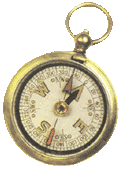Basic Water Information
One of the simplest, but most neglected area of emergency food storage is water. This problem is compounded when home food storage programs rely heavily on dried foods such as beans, wheat and powdered milk. You may have enough calories stored to last six months, but do you have enough water?
One gallon per day per person is the recommended minimum. More realistic though is about two quarts for drinking plus a gallon for washing plus whatever water you might need for cooking. This is the bare minimum.
You don't need to go out and buy specific storage bottles, but not all food household containers are fit for water storage. Plastic gallon milk bottles are safe, but not durable and may start leaking if stored for long periods. Glass gallon bottles like those used for apple cider are also safe, but be careful where you store them. Probably the perfect water storage bottles are the two-liter type soda bottles.
If plastic containers are used, care should be taken to assure that they are made of plastic approved for food contact by the Federal Food and Drug Administration. Polyethylene plastic is approved for food contact and is commonly used for containers of various sizes, including 55-gallon drums. Certain types of plastic containers are not intended for food contact (such as vinyl plastic waterbeds, or trash containers) and may leach undesirable chemicals into stored water. Leaching of chemicals from approved plastics is negligible.
Water stored in plastic containers should not be stored near gasoline, kerosene, pesticides or similar substances. Vapors from these substances could permeate the plastic and affect the water. Thick-walled polyethylene containers are significantly less permeable to vapors than are thin walled containers, Be certain, when selecting a storage container for water, that it has a tight fitting cap or lid to prevent entrance of contaminants and evaporation of water. Because sunlight has an adverse affect on plastic, water should be stored away from direct exposure to sunlight.
Shelf Life of Water
The shelf life of water depends on the original quality of the water, the temperature at which it is stored, how much light it is exposed to just to name a few. Many manufacturers of bottled water will include a shelf life on their product.
Treated water out of the tap needs nothing added and should have a shelf life of about 10 years. Untreated water, from a well for instance, should be stored with about 16 drops of chlorine bleach per gallon. Sterilized or disinfected water, stored in clean, food-approved containers with secure lids or caps, should be safe for use even after many years of storage. Replacement of stored water with fresh water should be necessary only if the stored water becomes contaminated in some way or if the container should begin to leak. Be certain to label each container so there will be no question about its contents. Include the date and information on the method of disinfection used.
Stored water may eventually develop a disagreeable appearance, taste, or odor. Under emergency conditions, water that tastes flat can be aerated by pouring the water from one container to another to another about three or four times.Be Careful About Rain Water - Rain water that has been collected should be treated the same as any other unknown water source. Rain water contains small particulates and acid.
Water Purification Methods
Boiling- Most water can be purified for drinking purposes by boiling it for 10 minutes. This will destroy the bacteria. In order to improve the taste it will be necessary to aerate it after boiling. This is accomplished by pouring it from one container to another several times. This should be done after the water has been allowed to cool.
Chlorination-
For long-term storage, water should be sterilized or disinfected. Water stored in thoroughly cleaned plastic or glass containers can be chemically disinfected for long-term storage by treating each gallon with sixteen drops of liquid chlorine bleach (Clorox or Purex type bleaches, containing 4% to 6% sodium hypochlorite). One teaspoon of bleach disinfects five gallons of water. This level of treatment will prevent growth of microorganisms during storage. After adding the proper dosage and stirring, allow the water to stand for 30 minutes. It should then have a distinct odor of chlorine. If this odor is not present, add another dose of the solution and let stand for another 15 minutes. The taste or smell or chlorine in water as treated in this manner is a sign of safety. It is not harmful. On the contrary, if you cannot detect chlorine in water you are trying to purify by this method, do not drink it.
Purification Tablets -
Tablets that release iodine may be used safely to purify drinking water. These tablets can be found at most drug stores and sporting goods stores. The names vary but it is generically known as halazone tablets. Follow the directions on the package. Usually one tablet is sufficient for one quart of water. The dosage is doubled for cloudy water.
Iodine -
Ordinary Household Iodine may be used to purify small quantities of water. Add 2-3 drops of Tincture Of Iodine to each quart of clear water (8-10 for cloudy water). Mix & allow to stand for 30 minutes.
